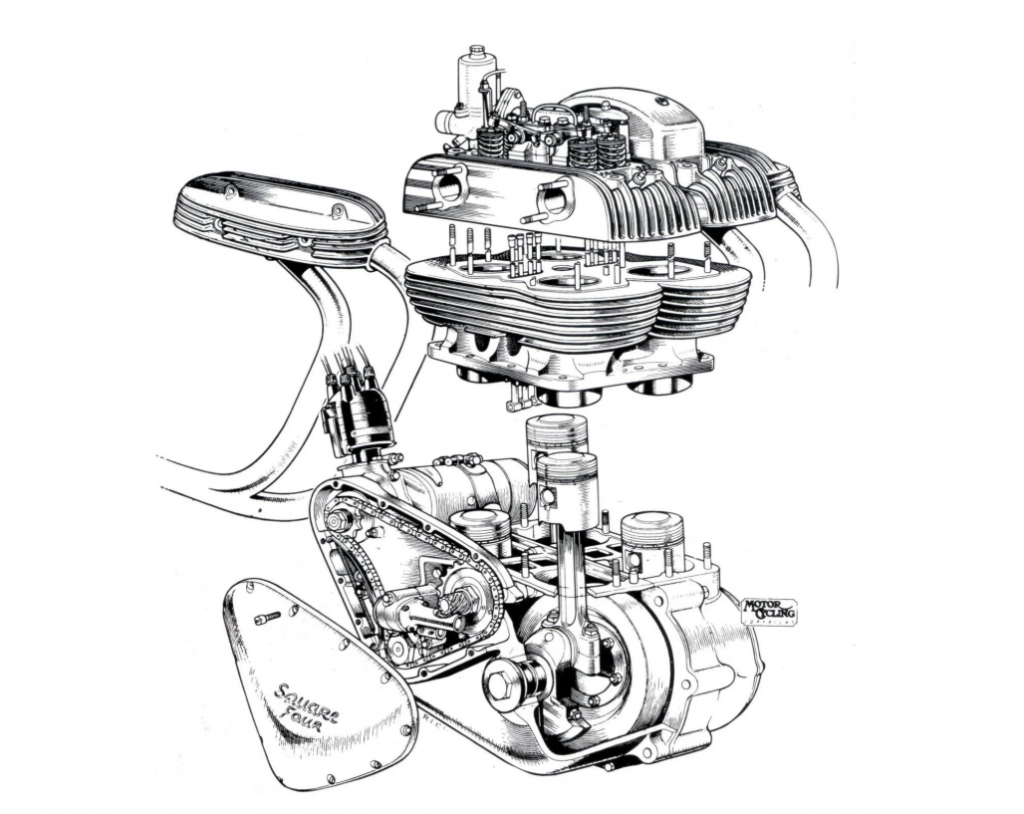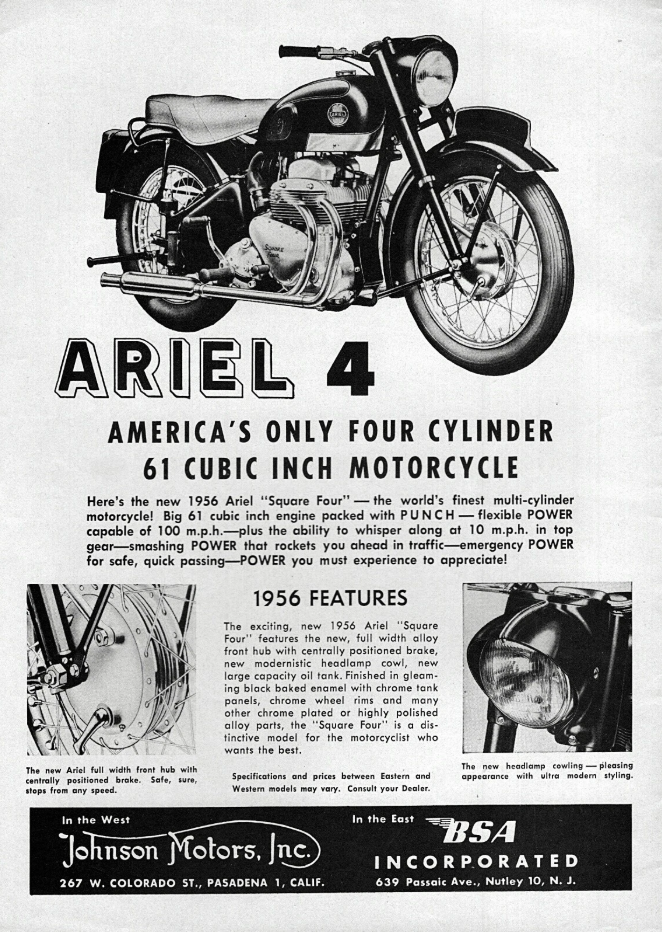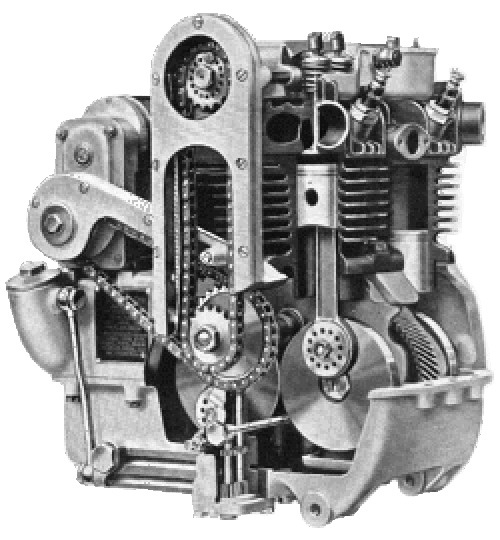I have never ridden a motorcycle, but I keep a close eye on the world of bikes. While the new car world has become a mostly grey glob of crossovers and hybridization, the two-wheeled end of the industry always seems to come up with weird, innovative stuff that piques my interest.
The latest case in point: MV Agusta, an Italian motorcycle company that started off as a branch of an airplane maker, has just revealed a new five-cylinder engine concept at the 2025 Esposizione Internazionale del Ciclo, Motociclo, e Acceessori (International Exhibition of Cycles, Motorcycles, and Accessories), otherwise known as EICMA.
What’s cool about this engine is that it’s not an inline-five, like you’d find on a couple of today’s modern Audis. And it’s not a V5, like the one found on Honda’s RC211V racing bike of the early 2000s. The cylinders aren’t arranged in a compacted V shape, either, like you’d see on Volkswagen’s now-dead VR5 engine. Instead, MV Agusta’s engine uses the style of a square-four setup, except with one extra cylinder.
Wait, What’s A Square-Four Engine?
If you’re not deep into motorcycle history, you’ve probably never heard of a square-four engine, also known as a U-shaped engine. Like the name suggests, the cylinders in a square-four are arranged in such a way that from the top, they resemble a square shape. Unlike a V4, which uses one central crankshaft to move all four pistons, the cylinders point straight down, with each row of pistons having its own crankshaft. Think of it like two inline-twin-cylinder engines placed that are next to each other, sharing a crankcase and cylinder head.

The idea for a square-four engine came from Edward Turner in 1928, who, at the time, was managing a Velocette dealership in London, according to Hemmings. He was eventually hired by Ariel, who offered a bike with a square-four for the first time in 1931. Here’s how it worked, according to RideApart:
The crankshafts were coupled by geared central flywheels and rotated counter to one another. When it all worked correctly, two diagonally-opposed cylinders were at bottom dead center while the other pair was at top dead center. In theory, this arrangement would cancel out the gyroscopic effects of the rotating assemblies which would substantially reduce vibration when running.

Most Ariel square-fours used a chain-driven overhead camshaft setup, which made it pretty advanced for the ’30s. The main advantage of this layout was its compactness. The shape meant the square-four could occupy roughly the same space as a V-twin or a big single-cylinder engine, which is pretty important for something as compact as a motorcycle.
Ariel’s square-four-powered motorcycles, which came to be known as “Squarials,” saw good success, having been offered by the company in various forms and displacements up until 1959, with tens of thousands of units sold. Other manufacturers have dabbled in square-four production since, the most successful being Suzuki. The company used square-fours for racing in the ’60s and the ’80s, eventually getting it into a production motorcycle, the RG500, in the mid-1980s.

Mobidelli, a racing motorcycle builder, also saw success with square-fours with their 500cc Grand Prix racers. Kawasaki even once tried to get into the square-four game in the early 1970s, according to EngineLabs, but tightening emissions regulations forced the company to abandon the project before it reached production.
The Square-Four’s Revival… As A Five-Cylinder
With the last square-four having left production by 1990, the engine design seemed resigned to the history books, outclassed by more pedestrian cylinder arrangements. But now, MV Agusta has brought the concept back with a frankly astonishing twist.
The company showed off the concept as a standalone engine on a stand at EICMA 2025, simply called the Cinque Cilindri (five cylinder) concept. The company has yet to release any details on the engine, and my emails to the company’s press office have, so far, gone unanswered. But thanks to some people on the show floor, we have a bit of info on this engine and its strange layout.
Looking at the engine, it’s tough to actually tell how the five cylinders are arranged. Moto.it, an Italian-language publication, managed to corner one of MV Agusta’s representatives at the booth for a YouTube video (above), who revealed some details. If the auto-dubbing from Italian to English by YouTube is correct, the rep confirms to the Moto.it journalist that it is in fact a “square” layout, except with three cylinders in one row, and two cylinders in the other. Wild.
Essentially, that means instead of two inline-twins next to each other, it’s an inline-twin and an inline-three next to each other. From the top, it likely looks like something close to a VR5, except with a bit more separation between the two rows of cylinders. That extra piston might throw off the normal balance inherent in the square-four’s design, but it’s worth noting that with a standard five-cylinder’s 1-2-4-5-3 firing order, it should be perfectly balanced. Whether that stays true for such a layout isn’t clear just yet.
What is clear is that this engine should pack a serious punch, performance-wise. Here’s more from that MV Agusta rep, auto-translated to English by YouTube:
Obviously, an engine will be developed as a platform that can have multiple displacements, from 850cc up to 1150cc. We are talking about an engine that is capable. It will be capable of delivering more than 240 horsepower and more than 130 newton-meters [95 pound-feet] of torque. So something truly new. We are MV Agusta, we wanted to differentiate ourselves from the others, we wanted to continue to be unique, and this is what we have thought for our near future.

Should this five-cylinder go into production, it would be more powerful than the spiciest engine MV Agusta offers right now, the 208-horsepower, 998cc inline-four found in the Brutale 1000 RR. A bike with this engine would be the third-most powerful motorcycle on sale today, just behind the Lightning LS-218 but still far behind the ballistic 300-horsepower Kawasaki Ninja H2R.
Sadly, it sounds like we won’t know more about the Cinque Cilindri’s production for a while. That MV Agusta rep told Moto.it it has “years” of development planned, and expressed how tough it is for engineers to design such an engine when there’s nothing from the competition to compare it to. Still, I have faith. Something this cool should be prioritized—as the MV Agusta rep says, weird stuff like this makes brands stand out as unique. In a world where all products are increasingly becoming the same, that’s valuable.
Top graphic images: Arial/Moto.it









So question. With the 3 on one side and the 2 on the other, what are the chances that the cylinders could be unequal sized? Like could the 3 have similar displacement to the 2? Making it more equal? Has there ever been an engine with cylinders of different displacement? So many questions here!
That’s how Honda did it with their V5…
Interesting. Now I need to go climb down that rabbit hole! Thanks for the info!
No. Honda did it with bank angle and firing order: https://www.youtube.com/watch?v=XjwTPY_fwKM
Engines with multiple cylinder displacements in the same engine have been made, sort of.
There have been several engines with “dummy pistons,” wherein one piston acts as a compressor creating a form of forced induction for the other piston, and in those engines the cylinders are typically different displacements. At least one such engine had three cylinders, all of different displacements, with two of them compressing the air in stages, and I tragically cannot remember what that specific engine was called now, but IIRC it saw mass production in motorcycles.
There are also experimental engines with at least two regular cylinders plus one larger low-pressure exhaust-scavenging cylinder, meant to recapture the energy from the still-expanding exhaust gasses of the other two cylinders, which in a conventional engine would be wasted energy lost to the atmosphere.
Neither of those examples though is an engine where different cylinder displacements are both firing. I’m not sure if any such engine exists.
Re: larger low-pressure exhaust cylinders, that’s an old concept from steam engines. So, if you go past internal combustion to external combustion, it did go into production.
Another example that is internal combustion, however, of production engines with varying cylinder displacement is anything that has connecting rods that connect to another connecting rod, instead of directly to the crankshaft, because this gives the other cylinders slightly different stroke length. Most radials (where only one cylinder is connected directly to the crankshaft), a few V12 designs (including a Soviet tank engine), and some three-bank W designs work like this.
Objection! A regular inline-5 is not fully balanced. There’s free mass moments of 1st and 2nd order. It’s even firing, but that doesn’t mean that it’s balanced. Without seeing the actual crank throw layout, we can’t say anything about the balance of the MV engine.
Thank you!
I question the utility of the fifth cylinder. Ariel’s engine was about balance and Suzuki used the square 4 layout as the optimal package for a disc valve two stroke with carbs sticking out the sides of the crankcase. Suzuki subsequently switched to reed valves and a V4 layout in the very successful RGV500.
The successful Suzuki RG500 Gamma 2-stroke was a square four. They were sold in the USA via the gray market in the ’80’s. I wish I had one!
This is going to have quite the wacky firing order, are all the cylinders on each crankshaft evenly spaced (so tdc firing for a cylinder every 240 degrees on the front bank and every 360 degrees on the rear) to minimize crank and cam peak torsional loads and have the same intake and exhaust runner tuning for all cylinders in a bank, or are they going to go with 144 degree timing but leave each individual shaft unbalanced, or something else entirely to minimize engine fore -aft rocking etc. my guess is the first, given the engine speeds necessary and importance of in cylinder exhaust residuals for an engine they hope will be making 220 hp/liter
Neat idea, I wish them luck, but it seems a bit like being odd for odd’s sake
Never ridden a bike?
How is that possible?
Next you’ll tell us you’ve never ridden a horse!
Neat engine though.
Yeah.
This seems more appropriate as referral to Mercedes.
If you have to write about it at all?
Like yeah this was trending on a bunch of other outlets over the past 2 days but…
Interesting a bit I guess but not a value add IMO!
Whatever, I guess.
Hi A!
If you’re talking about the engine, there are a lot of applications where compactness is the crucial trait.
If this is repairable and has other desirable attributes besides power, could be useful.
The engine configuration is fascinating, but am I the only one reeling at 240 HP?
Nope. Motorcycle manufacturers have been basically bench racing with their street legal sport bikes for about 20 years now. With a short wheelbase vehicle like a motorcycle there is only so much power that can be applied to the rear wheel before the front wheel comes off the ground. With the typical liter bike that is about 150 hp. Bikes got steadily faster in the 1/4 mile for years until the mid-00’s and then they stagnated when horsepower met the reality of physics. A new 200 hp ZX-10R is no faster in the 1/4 than an 150 hp 2008 ZX-10R
Every generation bikes get more powerful when strapped down on a dyno and then the electronics get more advanced to take away that extra power on the street and keep the rider from flipping the bike. However, buyers love to brag about spec sheets so they keep buying.
This is engineering for engineering’s sake. Interesting but unlikely to make it beyond the prototype stage.
I don’t know about that. MV Agusta is a low volume Italian motorcycle manufacturer. They need something unique to justify someone spending $25K to $75K for a bike.
At this point performance is a deadend – liter bikes maxed out usable power 2 decades ago.
I kind of feel like, if Honda hasn’t done it already then there’s a reason it won’t work.
I bet it will fit in a Suzuki Cappuccino or other Kei car. That is what it is really meant for.
Interesting. Strange. Very cool!
Begs the question, what benefit does it provide that a V5 (like Honda’s RC211) wouldn’t surpass by all aspects by not needing dual crankshafts?
I’m imagining a) you can have wider bearing surfaces on your conrods and crank bearings, b) no chance of piston skirts colliding, c) shared camshafts, d) shared top-facing intake and fuel rail, e) it’s different and they’re MV Agusta.
Edit: Oh yeah, f) it’s as wide as a parallel-twin since they put the clutch (and maybe alternator) on the 2-cylinder crank, g) they can place the transmission right below the 2-cylinder crank letting them use a longer swingarm.
Great analysis!
Thanks for the detail.
Would not a square-four have independent camshafts? Albeit, potential, for shared camchain.
The transmission, though, could theoretically be tighter in a Vee-configuration on the square4 as the bottom of the block would be narrower depending on packaging of the Vee and mounting angle.
I imagine they’d use a single intake cam in the middle and two exhaust cams. Don’t know about the transmission packaging. Heck, I’m just extrapolating from reading too much Kevin Cameron.
The RC211V’s 5th piston and firing order was Honda’s way of not having to utilize a balancer shaft that would normally be necessary on a narrow angle (<90 degree) V-4. Instead of having a power sucking balancer shaft it replaced it with a cylinder doing work.
Now, the Fiat 126 that I was going to build into a hill climb car? the one in the corner of the big shed that has been waiting for me to finish it for two decades? Now I have an engine for it. Oh, thank goodness, this will be in development for years, I can go back to not doing anything with it again.
I love 5 cylinders and this one is amazing!! I’d personally want to drop one in an original 500 or Honda Beat for some smöl shenanigans.
So it’s not a square.
It’s a Trapezoid.
Should be called a Trapezio Cilindri if Google is correct.
I agree- it’s really a U-5, but not a true square.